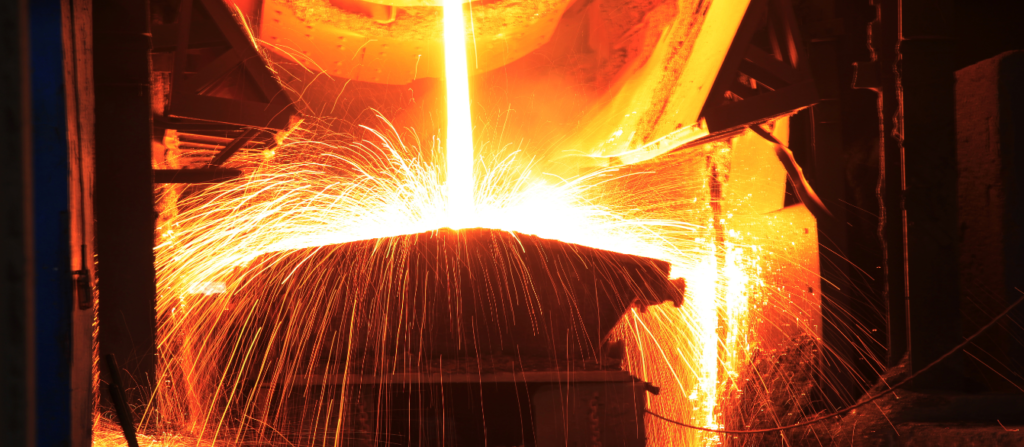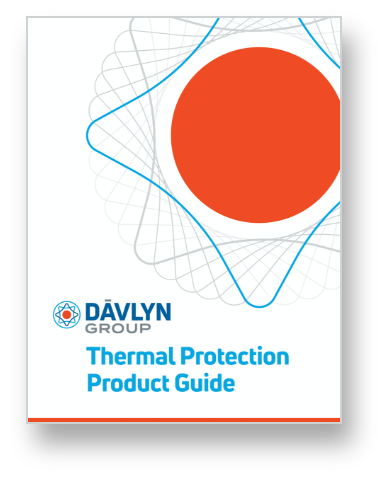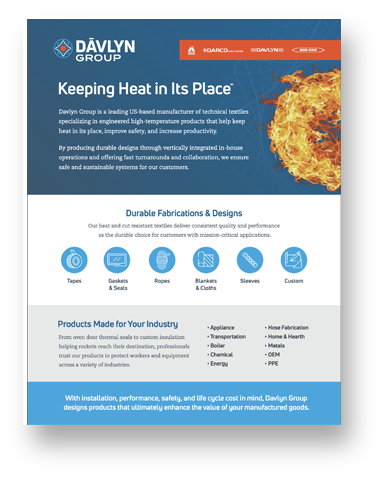By: Harish Lilani, R&D Director, Norfab-Amatex
In the metals manufacturing industry, the temperature of molten iron can rise to 2900 F (1600 C). Workers have to be protected from potential burn injuries arising from exposure to molten metal, sparks, radiant heat and open flame. Appropriate clothing and equipment help prevent incidents from minor burn injuries to fatal accidents.
Davlyn Group company, Norfab Corporation, in Norristown, PA, is a manufacturer of state-of-the-art, high performance flame-, heat- and cut-resistant textiles suitable for a wide range of applications such as safety clothing, garments for firefighters and electric utility workers, fire-blocking fabrics, welding fabrics and materials for composites and insulation applications. We use test methods and performance standards developed by ASTM International Committee F23 on Personal Protective Clothing and Equipment to ensure the safety and protection of workers exposed to various hazards in the metals manufacturing industries.
These ASTM test methods provide a tool to simulate various types of burn injuries arising from molten metal exposure and also offer performance-based personal protective equipment selection criteria.
Norfab employs novel, man-made fibers such as flame-resistant rayon and modacrylics; Nomex, Kevlar and Twaron; and phenolic, polybenzimidazole, polybenzoxazole, melamine, carbon, metallic and fiberglass fibers. We were pioneers in replacing asbestos safety clothing fabrics more than 30 years ago by introducing the European DREF core spinning system. Norfab has patented many hybrid textile structures. Norfab offers a variety of fabrics constructed from our hybrid DREF yarns, including aluminized safety fabrics for steel mill workers.
To manufacture these products, Norfab adheres to standards developed by ASTM International Committee D13 on Textiles for testing and quality control purposes. Our product brochures and technical data sheets always refer to the pertinent ASTM standards. In addition, Norfab’s testing instruments such as the breaking and trap tear tester, Taber abrasion machine, vertical flame testing unit, weight scales, ovens and many other instruments are maintained and calibrated to meet ASTM standards.
For the past 11 years, Norfab has complied with the requirements of standards developed by ASTM Committee F18 on Electrical Protective Equipment for Workers in our clothing for high voltage electric arc protection. Since then, we have developed various state-of-the-art lightweight flame-resistant fabric systems, which have become a sizable business opportunity for Norfab in the expanding electric arc PPE market. As a result, we have increased our participation in Subcommittee F18.65 on Wearing Apparel and are in the process of developing a unique glove fabric that has the potential to offer the highest level of electric arc and cut protection properties.
Harish Lilani has been an ASTM International member since 1979 and serves on ASTM Committees E54 on Homeland Security Applications, F18 on Electrical Protective Equipment for Workers and F23 on Personal Protective Clothing and Equipment.



